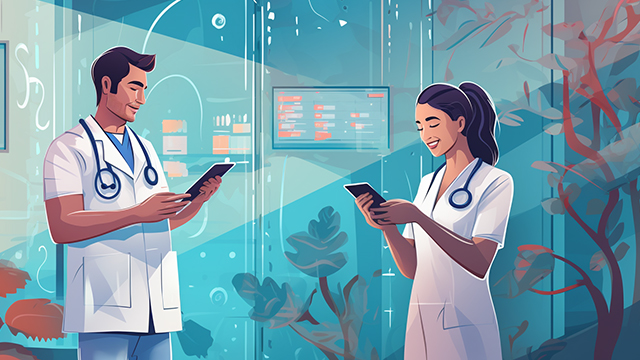Capitalizing on the Cold Chain Revolution: A Guide for Technology Solutions Providers (TSPs).
Unlock the potential of cold storage for your warehouse customers with cutting-edge solutions and services.
BlueStar's diverse portfolio offers unparalleled access to premium products and services that drive business growth and success. From state-of-the-art hardware to advanced software solutions, our portfolio is designed to empower businesses with the tools they need to thrive in today's competitive landscape.
Our vertical-based content focuses on different industry technologies, solutions, and insights.
A true VAD offers top-notch pick, pack and ship services, and provides programs and services that add value to the distributed products that increase their value or worth.
The BlueStar Difference2 min read
 Dev Pro Journal
:
September 22, 2023 4:42:36 AM EDT
Dev Pro Journal
:
September 22, 2023 4:42:36 AM EDT
Your TSP business may hold the key to better patient experiences and outcomes.
Communication can make or break any relationship, but effective communication between patients and healthcare providers is especially critical. Fortunately, technology can help remove barriers and enable smooth patient communication and data transfer.
Demand for solutions like remote patient monitoring and telehealth services is growing, along with increased smartphone penetration and internet availability. Government initiatives further support developing and adopting digital communications tools for the healthcare segment. One example, created for Europe by the WHO, called “United Action for Better Health,” has set “Empowerment through Digital Health” as one of its four main initiatives. The COVID-19 pandemic showed healthcare providers the urgent need for tech solutions that keep the lines of communication open and provide alternative ways to care for patients when face-to-face physician appointments aren’t possible.
The recognition of the need for technology that enables provider-patient communication is one of the reasons the digital health market in Europe is expected to grow from USD 45.3 billion at a compound annual growth rate (CAGR) of 16 percent from 2023 to 2030 to top USD 140 billion.
Patient Communication via “Tech Talk”
Here’s a closer look at how various technological solutions provide patients with access to information and improve communication between patients and providers.
mHealth is any healthcare application supported by mobile or wireless devices, including mobile phones, monitoring devices, and personal digital assistants. Everything from epidemic tracking to chronic disease management to patient and provider education becomes more convenient using mobile solutions, and mHealth solutions with SMS alarm systems are improving the rate of positive patient outcomes.
With both providers and patients sold on its value, the European mHealth market reached 33.6 percent in 2022, its highest value to date.
Disrupt Healthcare in Your Market
Communication and data-sharing solutions linking patients more closely with their healthcare providers increase patient engagement, enhance patient experiences, and streamline processes for healthcare providers. The innovative solutions you provide could set a new standard for healthcare IT and lead to many more improved health outcomes and higher quality of life.
How will you meet the need for enhanced healthcare provider-patient communication?

Unlock the potential of cold storage for your warehouse customers with cutting-edge solutions and services.

The retail landscape is transforming significantly, driven by increasing consumer awareness of environmental issues.

The fast-food industry is under increasing pressure to adopt more sustainable practices. RFID technology could be the solution.

Information is vital to quality healthcare. The solutions you provide can keep the lines of communication open.

Take the opportunity to provide solutions that give healthcare organizations access to information and allow them to save time and enhance the...

Healthcare providers need your expertise to implement reliable systems that collect vital patient data.